- The Luzon Strait is vital for maritime traffic and military operations in the Indo-Pacific;
- China and the United States have been stepping up their activities in the region to defend strategic interests;
- The US-backed Philippines’ increasing militarization of the Luzon Strait has heightened tensions with China.
The Luzon Strait stands out as a strategic chokepoint in the middle of the Indo-Pacific Ocean, serving as a crucial corridor for maritime traffic and military movements.
Its location between Taiwan and the Philippines places it at the center of an intense power struggle. As China and the United States step up their activities in the region, the Strait is becoming essential for defending interests and building alliances.
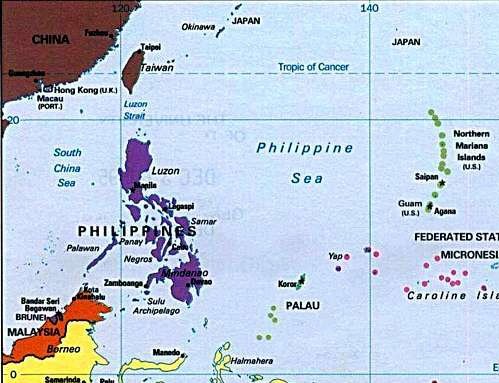
What is the Luzon Strait?
The Luzon Strait is a strip of water that connects the South China Sea to the Philippine Sea, separating the main island of the Philippines, Luzon, from the island of Taiwan.
Approximately 250 kilometers wide, the strait serves as an important sea and air route between Southeast Asia and the Western Pacific.
The region is not just water; several islands and islets are part of the Batanes Archipelago, a group of islands that belong to the Philippines.
These islands play an important role in regional geopolitics, as they control narrow passages that could be used by ships and submarines during military operations.
Therefore, control of these islands is of utmost importance for powers that wish to maintain a military presence in the region.
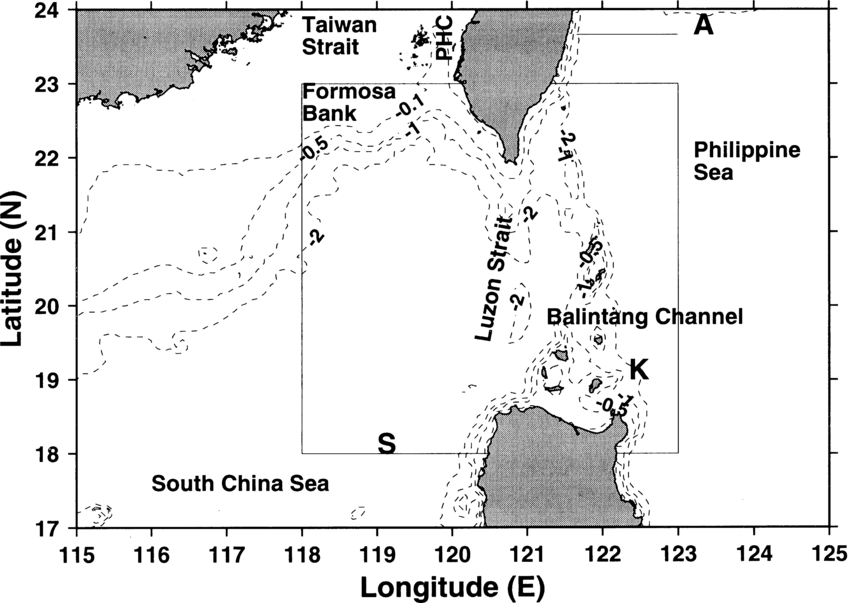
What is the Strategic Importance of the Luzon Strait?
The strategic importance of the Luzon Strait is multifaceted, involving military, economic, and political considerations.
The Luzon Strait is one of the world’s major shipping lanes, serving as a critical conduit for the transport of goods between East Asia and the rest of the world.
Ships transiting the strait carry a wide range of products, from petroleum to consumer goods. In addition, the strait is an important air route for both military and commercial flights.
Military-wise, the Luzon Strait is considered a strategic “chokeneck.” During a potential conflict, especially involving Taiwan, control of the strait could allow a military force to deny or limit access to the South China Sea or the Western Pacific by its enemies.
For China, which claims Taiwan as part of its territory, the Luzon Strait is crucial. Losing control of this strait would mean losing an escape route for its navy and limiting its ability to project power in the region.
The strait’s geographic location makes it a chokepoint that, in times of conflict, can be controlled to limit the movement of opposing naval forces.
For the US, ensuring freedom of navigation in the strait and supporting its regional allies, such as the Philippines, is essential to countering China’s growing influence in the region. On the other hand, China seeks to maintain a strong presence in the strait for its ambitions of reunification with Taiwan and control of the South China Sea.
How is the US, together with the Philippines, Strengthening the Security of this Region?
In recent years, the Philippines, with the support of the United States, has taken steps to strengthen security in the Luzon Strait and the surrounding areas.
The Batanes Island chain, located in the middle of the strait, has become an essential point for these initiatives. The Batanes Islands, particularly Mavulis Island, are seen as a strategic barrier protecting the northern entrance to the Philippine archipelago.
The Philippine government recently announced the expansion of naval infrastructure on Mavulis Island, a move that demonstrates Manila’s concern over China’s military activities in the region.
The Philippine Defense Ministry has highlighted the importance of Mavulis as a strategic territory that must be defended at all costs. In response to this new reality, the Philippines is deploying additional troops and developing military infrastructure on the island, a decision that has provoked reactions from Beijing.
In April 2024, during the Salaknib 2024 joint military exercises, the US deployed the Typhon Medium-Range Capability (MRC) missile system in northern Luzon.
This was the first time that this missile launcher, capable of firing Tomahawk cruise missiles and SM-6 missiles, had been deployed in the Indo-Pacific region, marking a significant step forward in the US-Philippine military deterrence against China.
How Has the US Military Presence Caused Tensions in Philippine-China and US-China Relations?
The Philippines’ military presence in the Batanes Islands and cooperation with the US have deeply angered China. Beijing views Manila’s actions as a direct threat to its strategic interests in the region.
As previously stated, China views the Luzon Strait as an important route for its naval operations, especially in the event of a conflict with Taiwan.
The Philippines’ military presence in the Batanes Islands limits China’s freedom of maneuver in the region and could impede or hinder the movement of its naval forces toward the Western Pacific.
Furthermore, it is important to consider that, although China could choose to move its forces around northern Taiwan, this route presents significant strategic challenges. The presence of Okinawa and other Japanese islands near Taiwan creates a natural and militarily robust barrier, capable of “closing the door” to the Chinese in this direction.
As a result, China has increased its military activities in the South China Sea and reinforced its territorial claims over the region, in response to the Philippines. The rhetoric coming from Beijing has become increasingly aggressive, with Chinese officials warning of the “consequences” of Philippine actions.
However, the Philippines – with US support – has resisted Chinese pressure, reaffirming its sovereignty over the Batanes Islands and its right to strengthen the defense of these islands.
With this dynamic, the Luzon Strait becomes a potential point of confrontation between Beijing and Washington.
With the Philippines strengthening its defenses and the U.S. increasing its military presence, the strait could become a testing ground for China’s determination to assert its territorial claims and its ability to resist external pressure.
What are the Geopolitical Predictions for the Future of the Luzon Strait?
The geopolitical future of the Luzon Strait will not only be a question of militarization and great power rivalry, but also how these dynamics will influence the regional security architecture and the balance of power in the Indo-Pacific.
An analysis of this scenario suggests that, in addition to direct confrontation between the United States and China, the Luzon Strait could become the stage for a new form of hybrid warfare, where the struggle for influence could take place through both conventional and asymmetric means, such as cyber warfare, disinformation, and the use of paramilitary forces like the Chinese Little Blue Men.
Beijing, for example, could exploit growing internal divisions in the Philippines, such as issues of sovereignty and local governance in the Batanes Islands, to weaken Manila’s position without resorting to direct confrontation.
China could support separatist movements or promote disinformation to create political instability, using its economic power to draw regional Philippine leaders into its orbit, thereby weakening the unified defense posture that Manila and Washington are trying to establish.
At the same time, the United States, aware that a conventional war with China would have exorbitant costs, could step up its “gray zone” operations in the region, such as sending non-military vessels or intelligence operations to gather data and deter Chinese presence.
Support for regional allies could be expanded through less visible forms of assistance, such as cyber warfare training and strengthening local defenses through emerging technologies such as surveillance drones and artificial intelligence.
An additional tactic would be the use of paramilitary Chinese fishermen in the Luzon Strait. These fishermen, often aligned with the Chinese government, could begin to assert their presence in the region, coming into conflict with the Philippine coast guard.
Although technically civilian, their connection to the Chinese military makes the situation more complex. If the Philippines were to use its coast guard to respond, the international narrative could frame them as the aggressor, creating a political and diplomatic dilemma, since the perception would be that Manila was attacking civilians rather than paramilitaries.
In addition, the Luzon Strait could become a testing ground for the effectiveness of new multilateral alliances in the Asia-Pacific, such as the QUAD (Quadrilateral Security Dialogue between the United States, Japan, India and Australia), or AUKUS and other regional partnerships.
These blocs could begin to play a more active role, not only in deterring China, but also in shaping the norms and rules governing the use of the strait and, by extension, the South China Sea.
Naval cooperation and intelligence sharing between these countries could result in a new form of balance of power, where influence is maintained not only through military presence, but through potential technological superiority and strategic coordination.
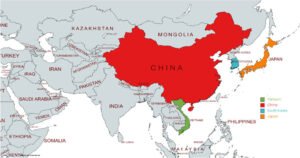
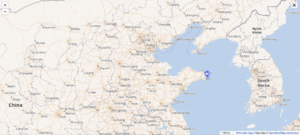

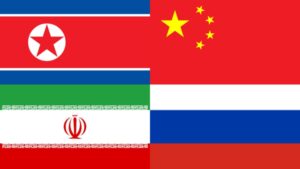
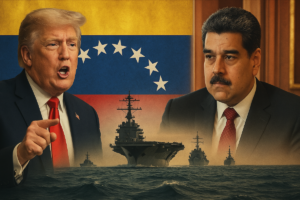

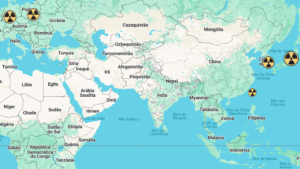


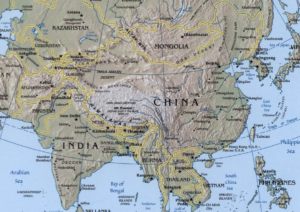

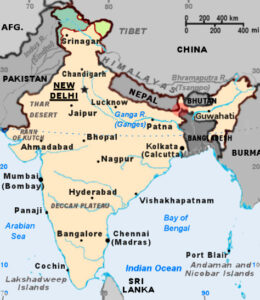

Be First to Comment